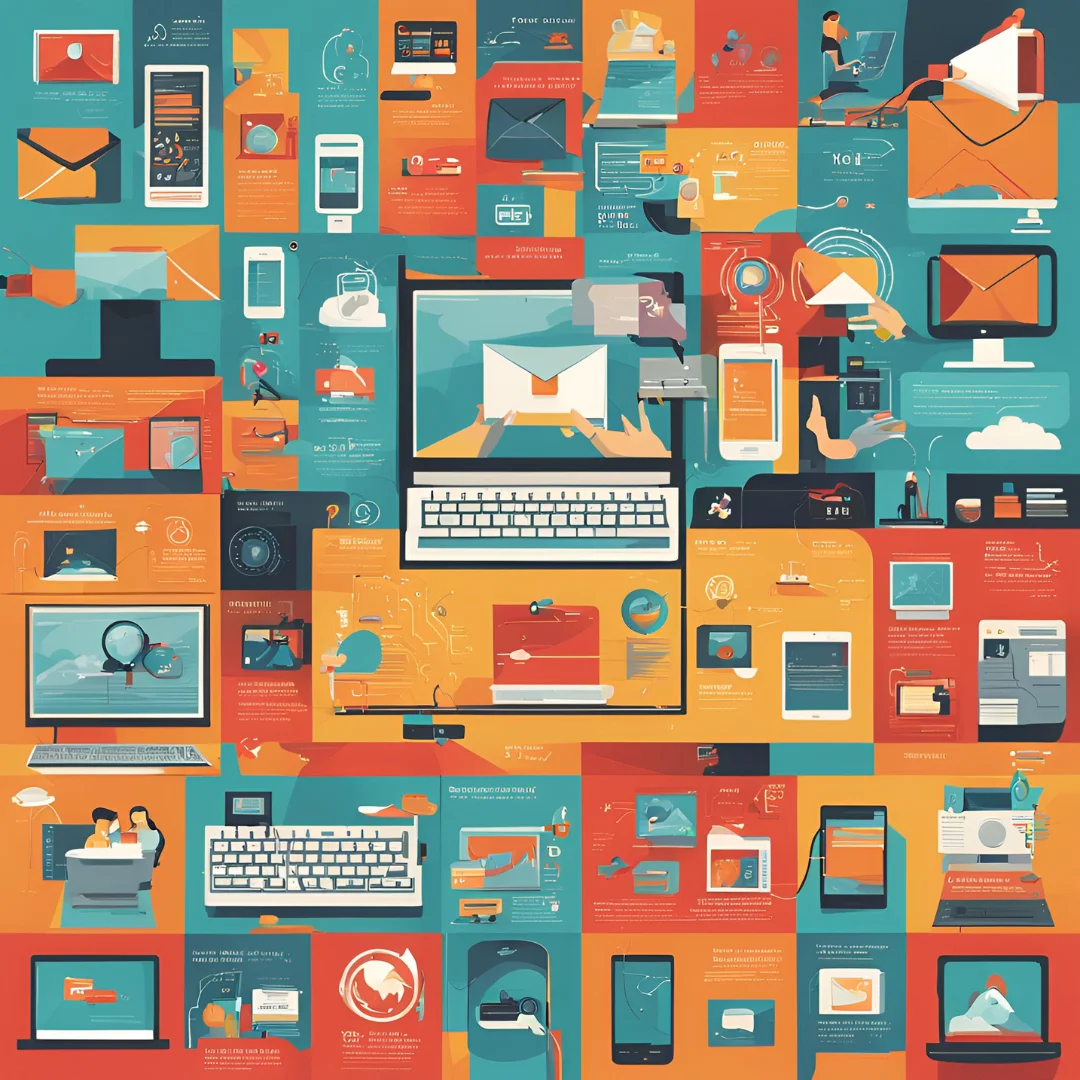Email, which stands for "electronic mail," is a commonplace tool in modern life that is used as the main form of communication for people, companies, and organizations all over the world. However, the story of email's development from its modest origins to its status as a vital tool in the digital age is an intriguing one of both societal change and technological innovation. This blog explores the origins, development, and extensive effects of email on business, culture, and communication.
The Origins of Email: A Revolutionary Concept
1.1 Early Concepts and Predecessors
Before the internet ever existed, the idea of electronic messaging dates back to the 1960s. During this time, academics were investigating techniques to transmit messages across computer terminals at different institutions. At MIT's Compatible Time-Sharing System (CTSS), one of the first electronic messaging systems was created in 1965. Users could leave messages for other users who would later connect onto the same computer.
The ARPANET, which served as a forerunner to the current internet, was another early example. ARPANET was created by the Advanced Research Projects Agency (ARPA) of the U.S. Department of Defense to facilitate electronic communication between researchers at various research institutes. In order to differentiate between the user and the computer, computer engineer Ray Tomlinson used the "@" symbol in 1971 to send the first email message. This format is still used for email addresses to this day.
1.2 The Birth of Modern Email
The foundation for contemporary email was established by Ray Tomlinson's groundbreaking work. Messages could be transferred between computers on a network thanks to his straightforward but revolutionary invention of using the "@" sign to separate the user name from the host computer's name. History has forgotten the precise contents of Tomlinson's first email, although it was a test message with perhaps something as meaningless as "QWERTYUIOP."
This innovation signaled the advent of email as a useful tool for communication. Academic and military institutions were the main users of email networks during the 1970s. But as networks expanded, so did the usage of email, and by the 1980s, it was beginning to make inroads into the commercial sector.
The Expansion and Standardization of Email
2.1 The 1980s: Email Goes Mainstream
Email adoption increased significantly in the 1980s, especially in government and commercial settings. Email evolved from a specialized tool used by academics and researchers into a popular form of communication as computer networks grew larger and easier to use. Email clients and user-friendly interfaces like MMDF and BerkNet, both based on Unix, have made sending and receiving emails simpler for non-technical users.
Around this time, a number of private businesses started providing business email services. CompuServe stands out among the rest since it was one of the first internet service providers (ISPs) to offer email as a feature. Furthermore, the creation of Simple Mail Transfer Protocol (SMTP) in 1982 standardized the transmission of email messages over the internet, enabling interoperability between various email systems.
2.2 The 1990s: The Birth of Web-Based Email
When email became more widely available, the 1990s were a crucial decade for it. Internet usage skyrocketed as a result of the World Wide Web's emergence and the release of graphical web browsers like Netscape Navigator, which made navigating the internet easier.
Sabeer Bhatia and Jack Smith launched the first free web-based email service, Hotmail, in 1996. Because Hotmail was web-based, users could access their email from any computer with an internet connection, which at the time was a groundbreaking idea. Millions of people were using Hotmail within a year of its rapid rise in popularity. After acquiring Hotmail in 1997, Microsoft rebranded it as MSN Hotmail and eventually integrated it into Outlook.com.
Hotmail's popularity paved the way for the emergence of additional web-based email services, such as Yahoo Mail and Google's Gmail (which debuted in 2004), which further democratized email access and cemented its position as the primary means of online communication.
The Impact of Email on Communication and Society
3.1 Transforming Personal Communication
Email changed interpersonal communication by giving users a quick, dependable, and affordable option to keep in touch with each other no matter how far apart they are in space. Before email, the only options for long-distance communication were frequently pricey phone calls or sluggish postal systems. Instant messaging via email made it simpler to stay in touch with friends and family who lived all over the world.
Compared to in-person interactions, email's asynchronous format, which allows messages to be sent and received at any time, also facilitated more deliberate and meaningful communication. This has led to email becoming the go-to form of communication for both personal and business needs since it provides a thoughtful and immediate response.
3.2 Email in the Workplace: Enhancing Productivity and Collaboration
Email has significantly impacted teamwork and productivity in the office. It has evolved into the standard communication tool for the majority of firms, allowing staff members to swiftly and effectively engage with partners, clients, and coworkers. Because email allows workers to stay in touch with their colleagues from anywhere in the world, it has also contributed to the growth of remote work.
Paperwork has become less necessary as a result of the ability to transfer documents, files, and other attachments via email, streamlining operations. Email threads also make it simple to keep track of discussions and decisions, which simplifies project management and guarantees that everyone is in agreement.
But email's widespread use has also brought up problems, like email overload and the fuzziness of work-life boundaries. Effective email management techniques are essential since the pressure to reply to emails promptly and the expectation of continuous connectivity can cause stress and fatigue.
3.3 The Role of Email in Marketing and Commerce
Email is become a very effective tool for commerce and marketing. Businesses can use email marketing to target huge audiences with messages that will increase sales and customer engagement. Businesses can increase the efficacy of their campaigns by customizing content and segmenting email lists to target particular client segments with their communications.
Email's significance has increased with the growth of e-commerce, as companies use it to send out promotional offers, shipment updates, and order confirmations. Transactional emails have become an essential part of customer relationship management since they are sent in response to a user's activities (such making a purchase or signing up for a service).
Email is becoming a vital weapon in the marketing toolbox due to its low cost, broad reach, and measurability. But the growth of email marketing has also brought up problems, like inbox saturation and the have to abide by laws like the GDPR and CAN-SPAM Act in order to preserve customer data.
3.4 The Cultural Impact of Email
Not only has email revolutionized communication, but it has also had a wider cultural impact. It has affected our understanding of language, manners, and even time and communication. New writing styles have emerged as a result of the widespread use of email, such as the "email style," which is typically shorter and more direct than traditional letter writing.
Additionally, email has spawned new manners and social conventions. The extensive use of email has led to the development of standards such as the use of "CC" and "BCC" fields, the significance of subject lines, and the expectation of prompt responses. As email interacts with other digital communication channels like social networking and instant messaging, these conventions will likely continue to change.
Additionally, email has contributed to people's empowerment and the democratization of information. People can now interact with others who share their interests and concerns, exchange knowledge, and organize and mobilize for social and political issues.
Conclusion
Email's transformation from a basic messaging tool to a robust and versatile communication platform has had a significant influence on almost every part of contemporary life. Email has revolutionized business processes, shaped cultural conventions, and revolutionized personal communication. It is now an essential tool for connecting, collaborating, and running our daily lives.




